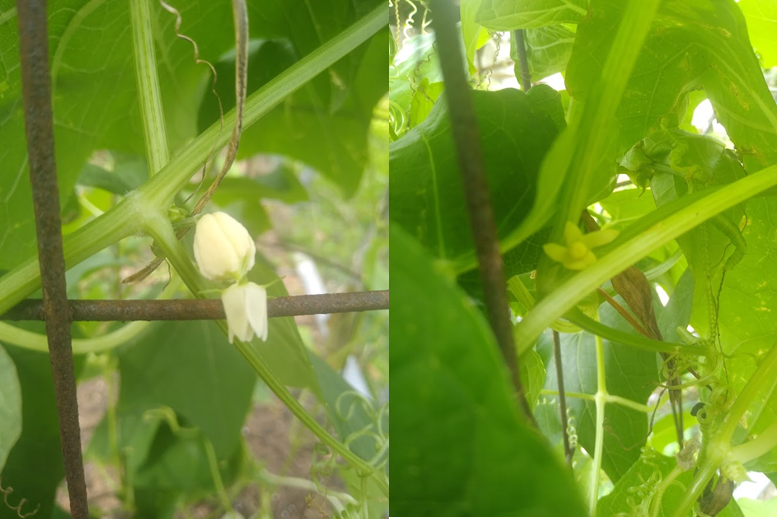
by David Hubbell | Jun 25, 2021 | Mirliton
Background:
Since June 20th, 2020, Mirliton.org has been working with growers throughout the country on the Ishreal Thibodeaux White Mirliton Preservation Project in an attempt to bring back, from the brink of extinction, this rare ivory white variety of the mirliton grown and cared for over four decades by Opelousas, Louisiana’s Ishreal Thibodeaux. If you haven’t already checked out the last Update on the Ishreal Thibodeaux White Mirliton Preservation Project – 1st Quarter 2021 – Mirliton then please do so to see the progress up to that point. It links back to the other updates which contain an in depth look at all of our growers and efforts from the start of the project.
Grower Update:
As mentioned last update, we were able to expand our growing efforts to 10 new growers; mostly in Louisiana but some in Texas. This is in addition to our existing six from last year. Sadly, it looks like our Carolina and Alabama plants did not survive into the 2021 growing season. Our sincere hope is to resupply these folks with plants in early February 2022 for a second try.
Reports from the Field:
The last 3 months have been the start of a new chapter for many mirliton growers venturing into the Ishreal Thibodeaux mirlitons for the first time; or in some cases, returning to it after a long absence due to availability. Attached are a series of several photos from our new and existing growers from May through June.
Wade Guidry – Cutoff, LA
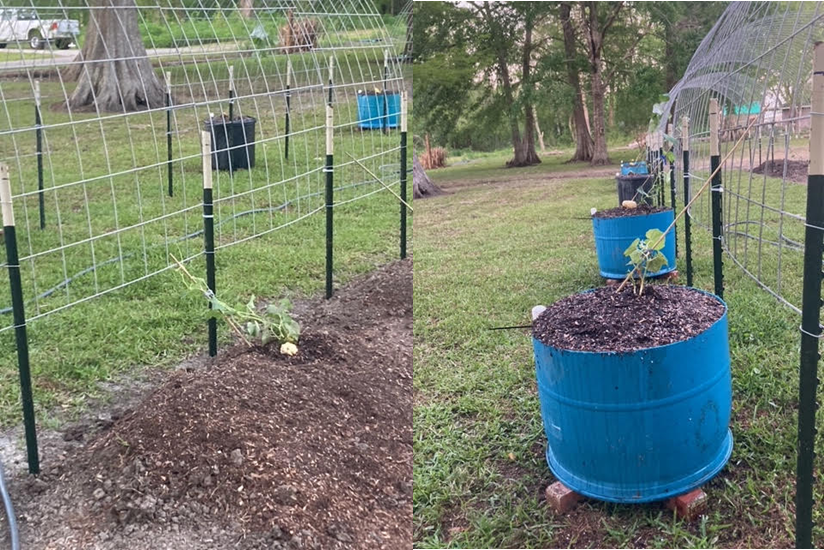
Image 1. Wade Guidry’s IT mirliton in May 2021.
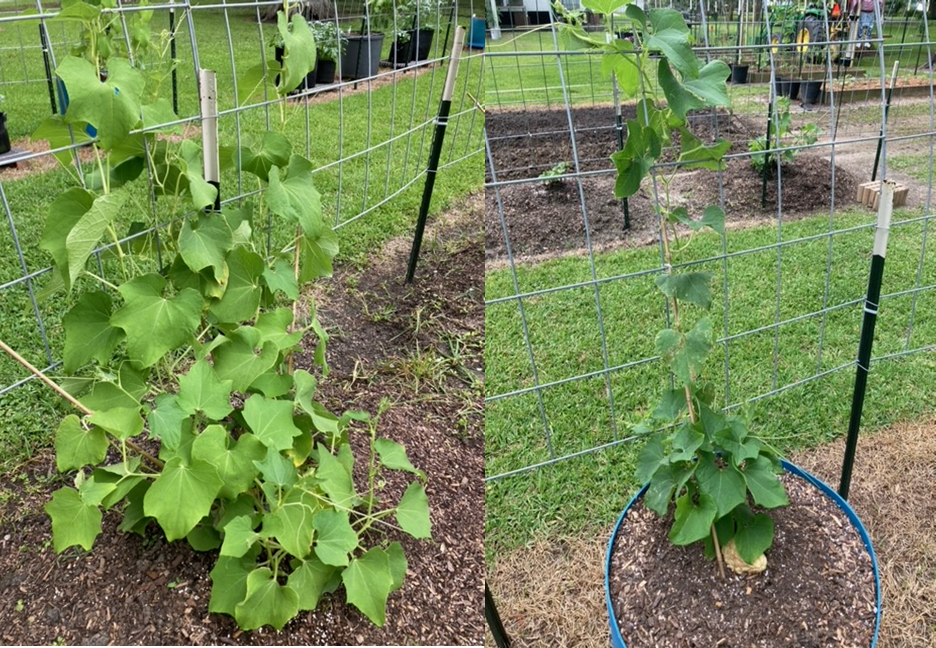
Image 2. Wade Guidry’s IT mirliton in early June 2021. Looking good Wade!
David Duvic – West Felicians Parish, LA
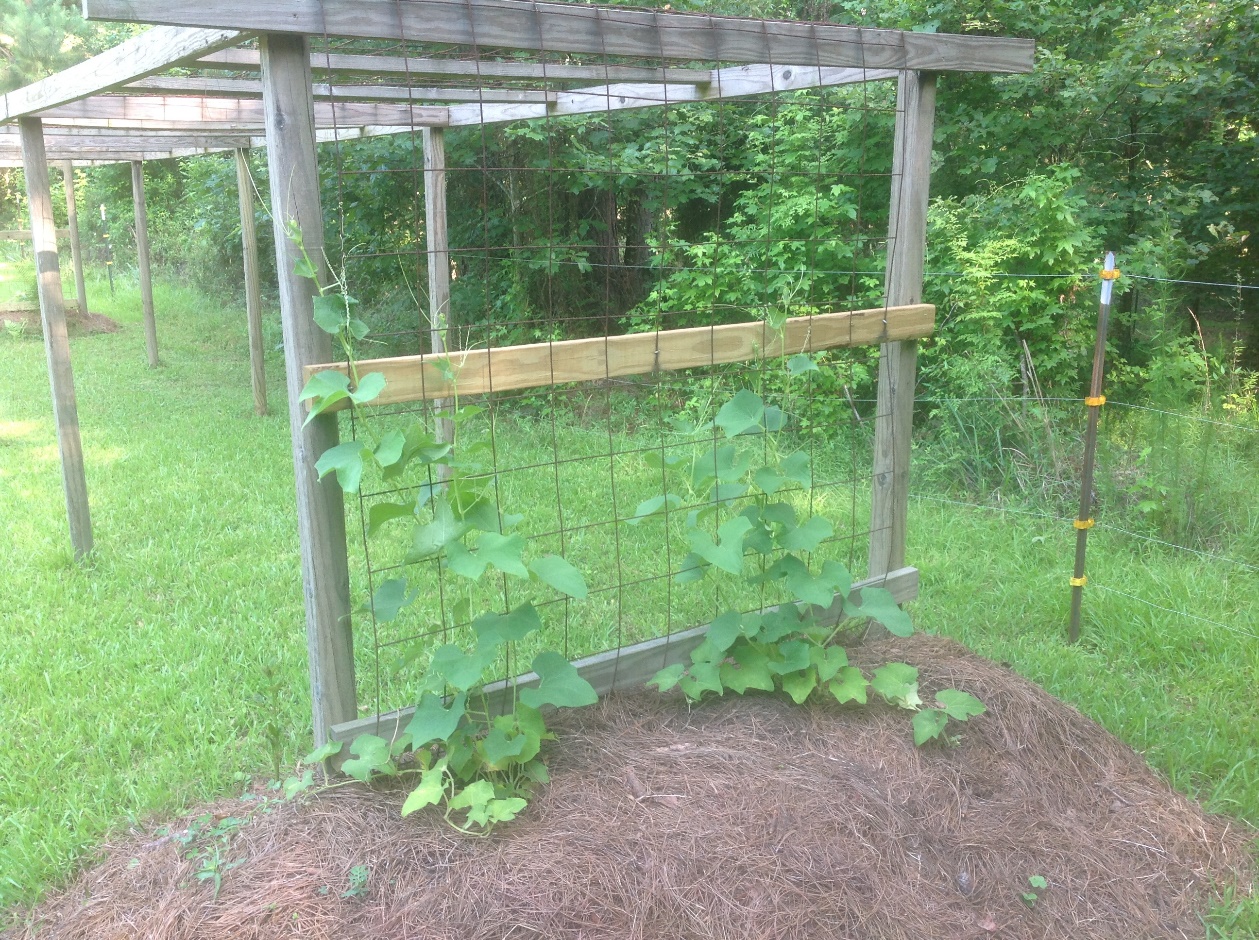
Image 3. David Duvic’s IT mirliton in June 2021.
Christopher Brooks – Opelousas, LA
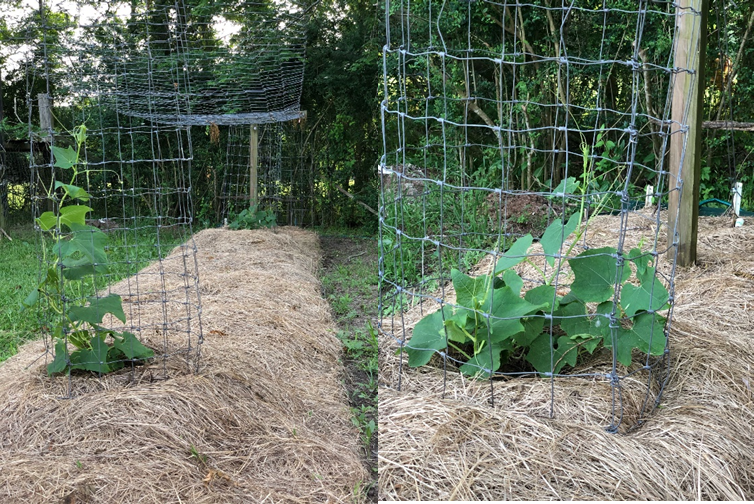
Image 4. Christopher Brook’s IT mirliton in May 2021.
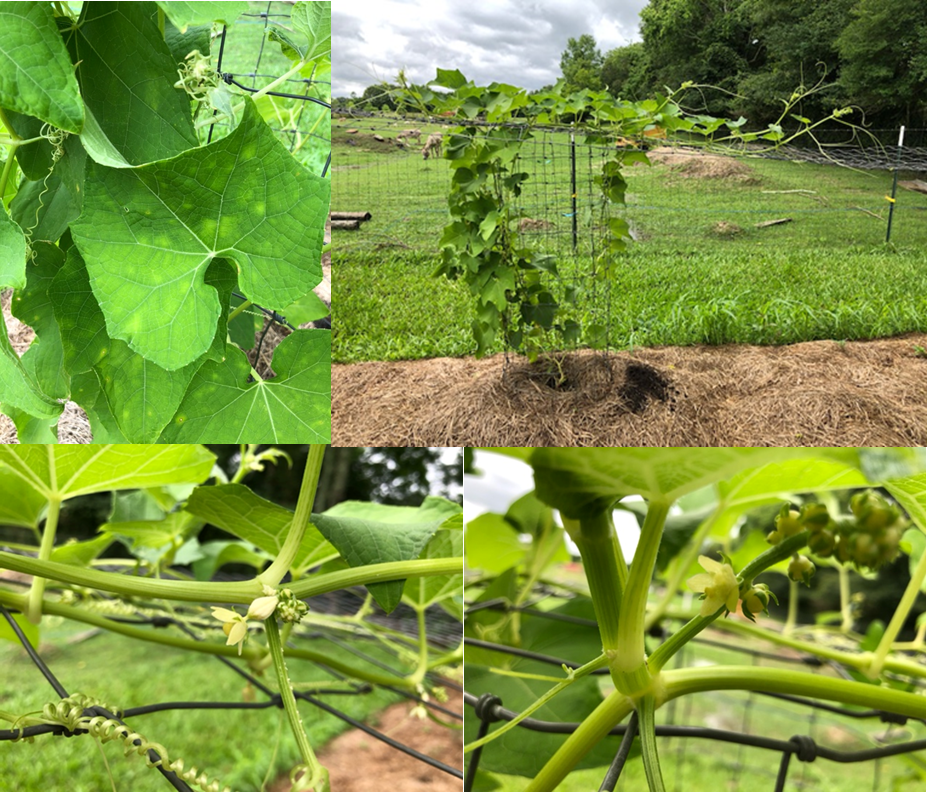
Image 5. Christopher Brook’s IT mirliton in June 2021. Wow Christopher! This variety obviously loves to grow in the Opelousas soils. Look at it grow!
Laken Thomas -Lake Charles, LA
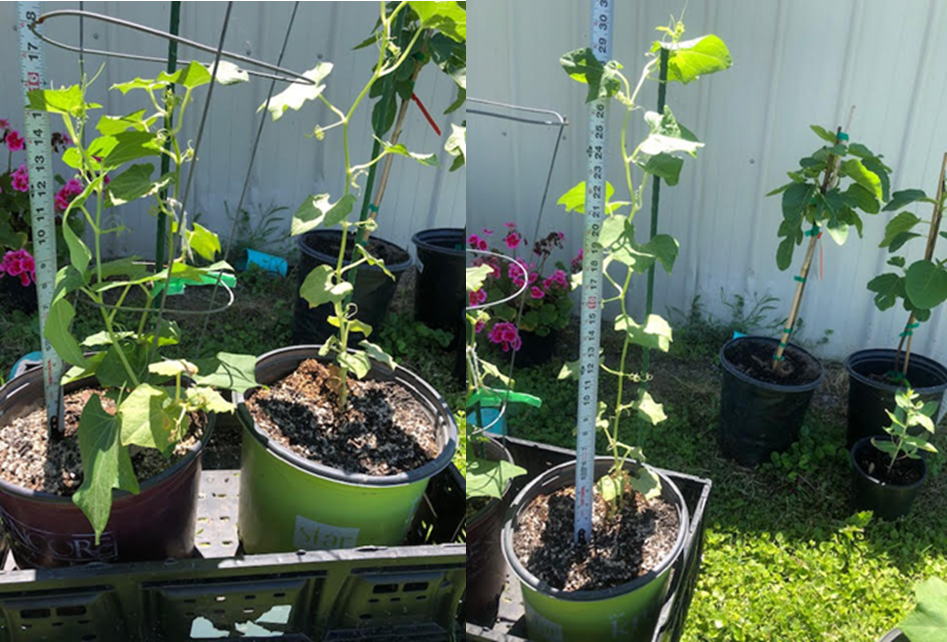
Image 6. Laken Thomas’ IT mirlitons in June 2021.
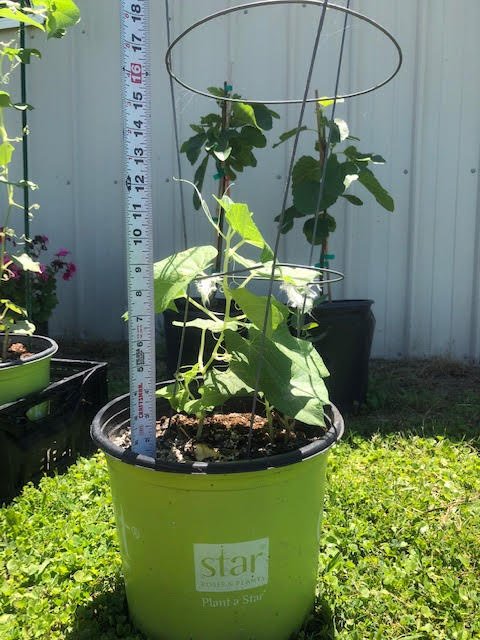
Image 7. Laken Thomas’ IT mirlitons in June 2021.
Laken notes:
“Plant #1 has grown 6″ from 3.27.21 to 4.26.21
Plant #2 has grown 1″ from 3.27.21 to 4.26.21. This plant has two shoots of equal length. This plant has grown plenty but the nutrients have distributed between the vines making the plant more bushy than long.
Plant #3 has grown 12″ from 3.27.21 to 4.26.21. This plant is a single vine.”
Brad Langlinais – Lafayette, LA
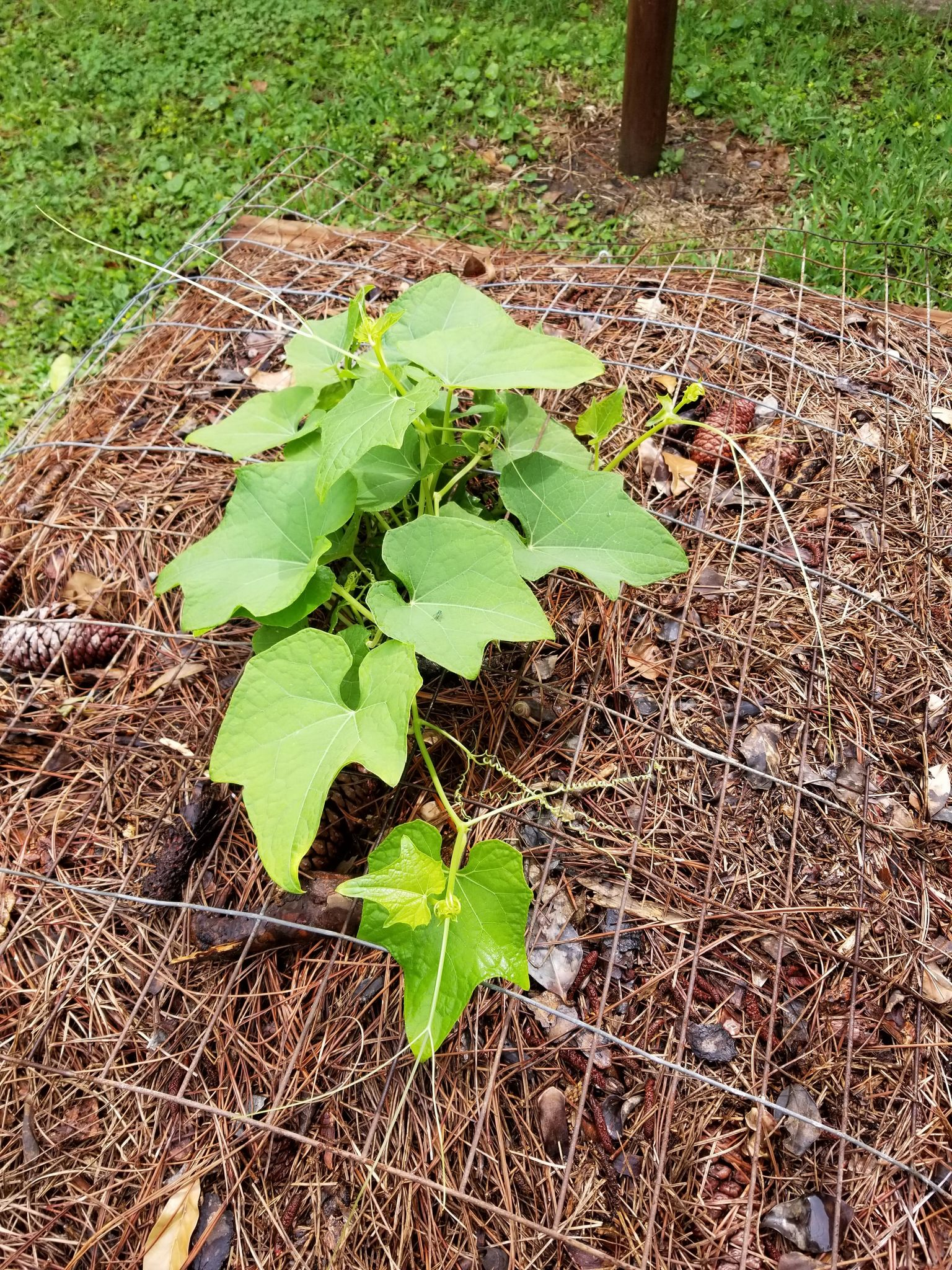
Image 8. Brad Langlinais IT mirlitons in early May 2021.
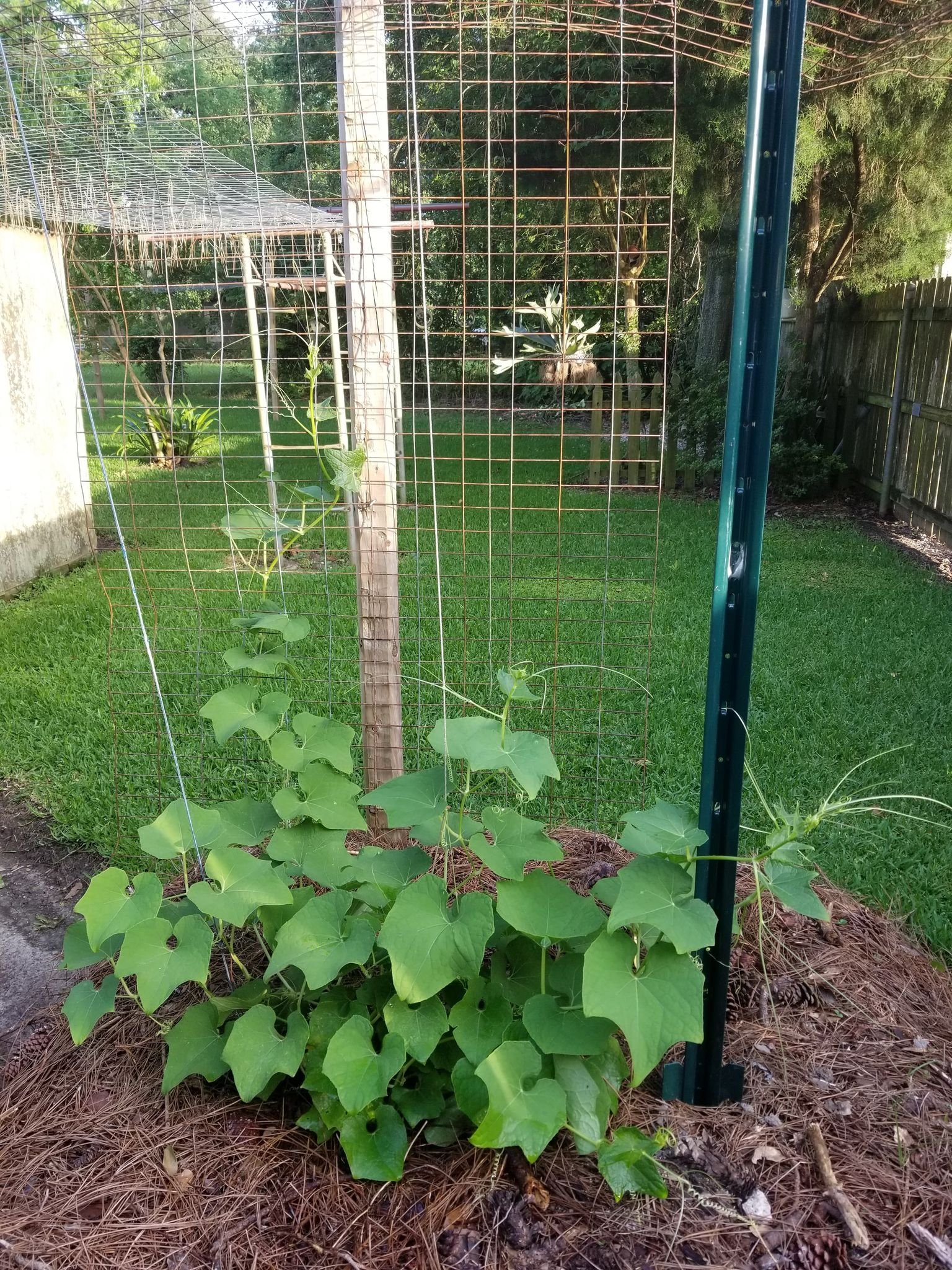
Image 9. Brad Langlinais IT mirlitons in late May 2021.
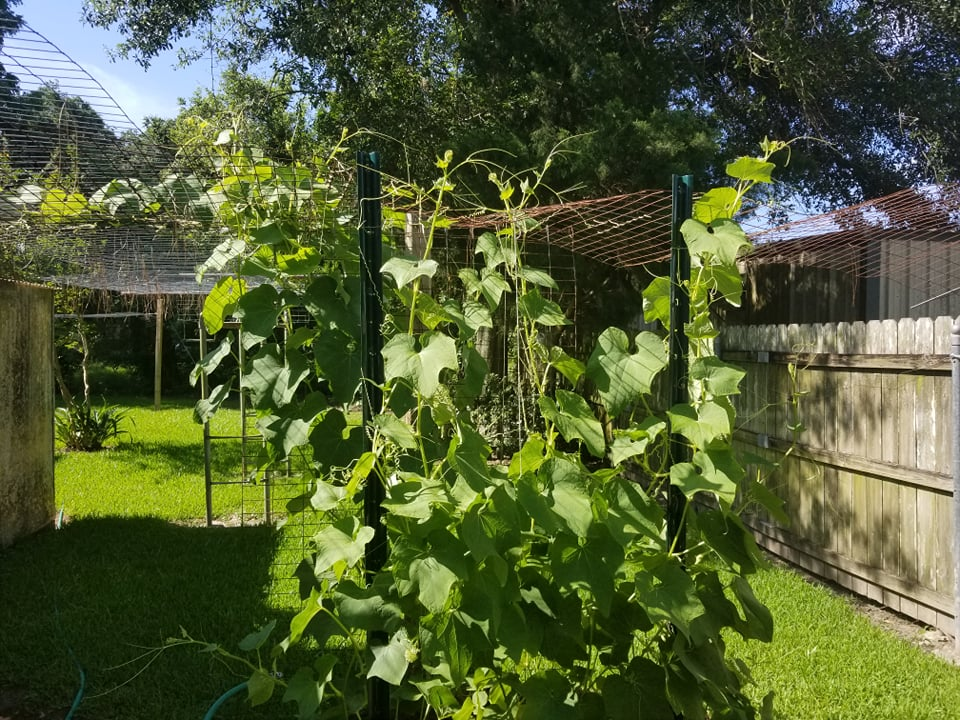
Image 10. Brad Langlinais IT mirlitons in mid-June 2021. Way to geaux Brad!!!
Brad notes: “I`m watering twice daily with old aquarium water.”
From our established growers:
Paul D’anna, Master Mirliton Grower – Metairie, LA
Paul updates us with the following bit of sage advice:
“Now that the hot season upon us, it’s survival time.
I trimmed back my vines to encourage new growth from the lower part of the vines.
I also wrapped the base of the vines with aluminum foil to protect them from squash borers.
Now the only thing to do is pray and wait for the Fall. – Paul”
Not everyone has seen squash vine borer issues with mirlitons, but this is something to definitely keep in mind should you fear this is an issue with your mirliton.
James Cobb– Houma, LA
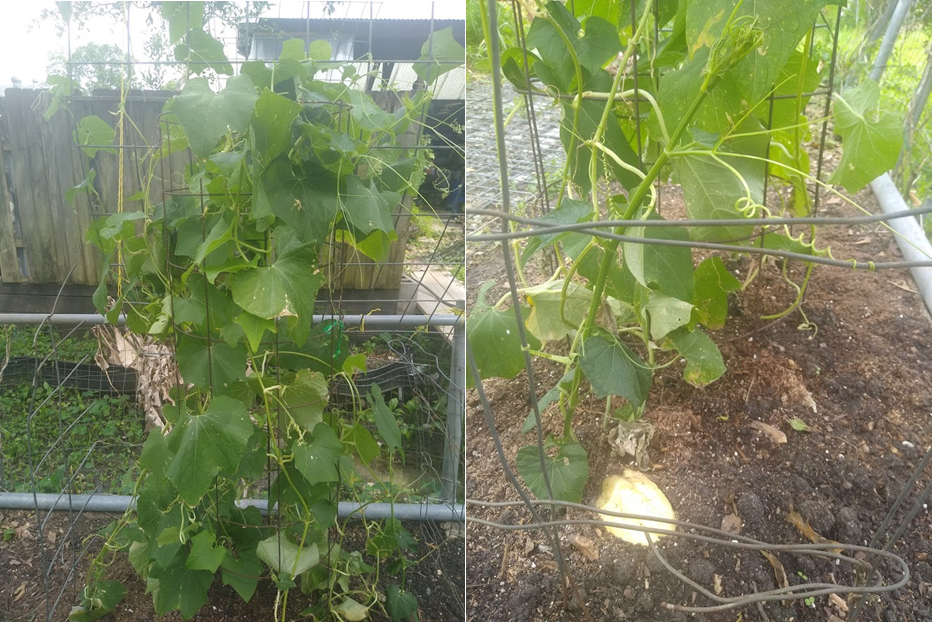
Image 11. James Cobb IT mirlitons in mid-June 2021.

Image 12. James Cobb IT mirlitons in mid-June 2021.
Chef John Folse – Baton Rouge, LA
Chef John and his team at White Oak Estates and Gardens including Brian Ainsworth and Ryan Diez continue to keep a protective and nurturing eye over their 6+ vines. Here is just a tidbit of what has been going on.
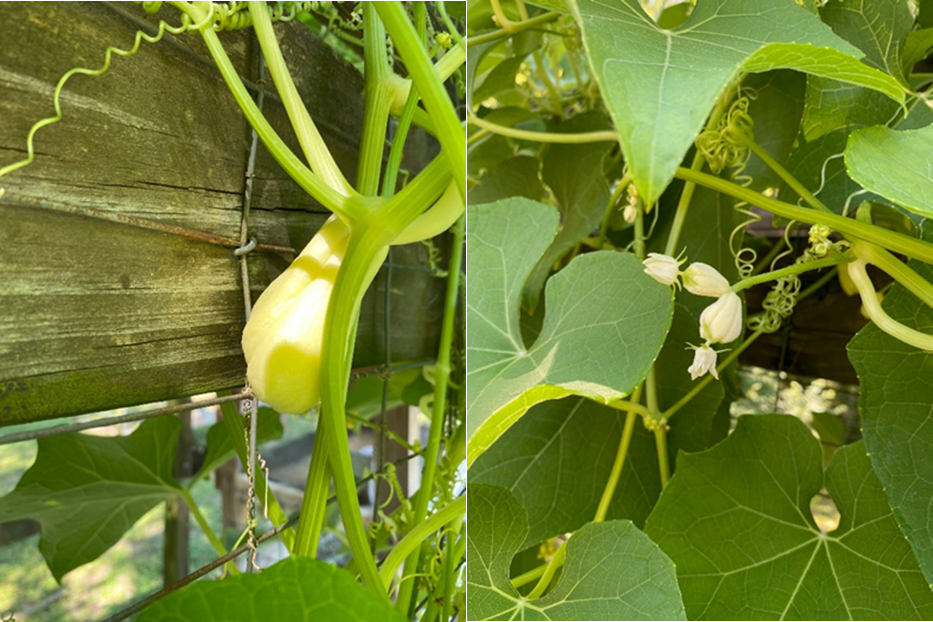
Image 13. White Oak Estates and Gardens IT mirlitons in early June 2021.
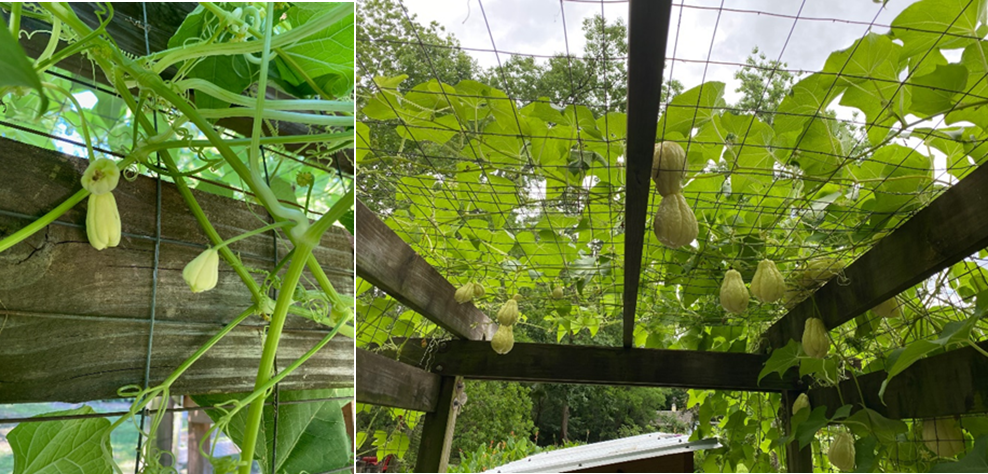
Image 14. White Oak Estates and Gardens IT mirlitons in early June 2021. Yes folks! They are already picking a spring crop!!! Nice going Chef and team!
So far, our Texas growers aren’t doing too bad either. Please check out their progress.
Kevin de Santiago – Round Rock, TX
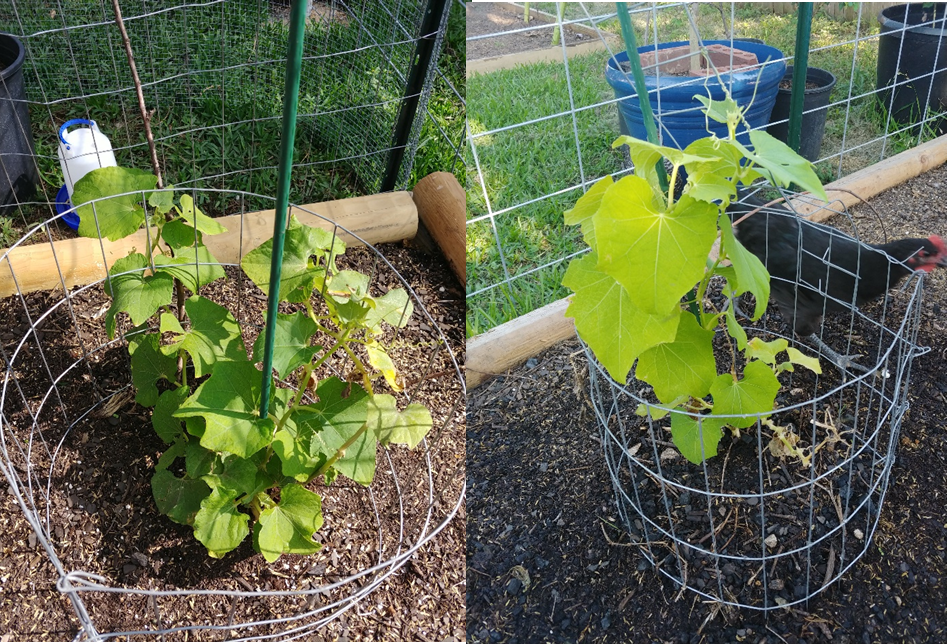
Image 15. Kevin de Santiago’s IT mirlitons in early May 2021.
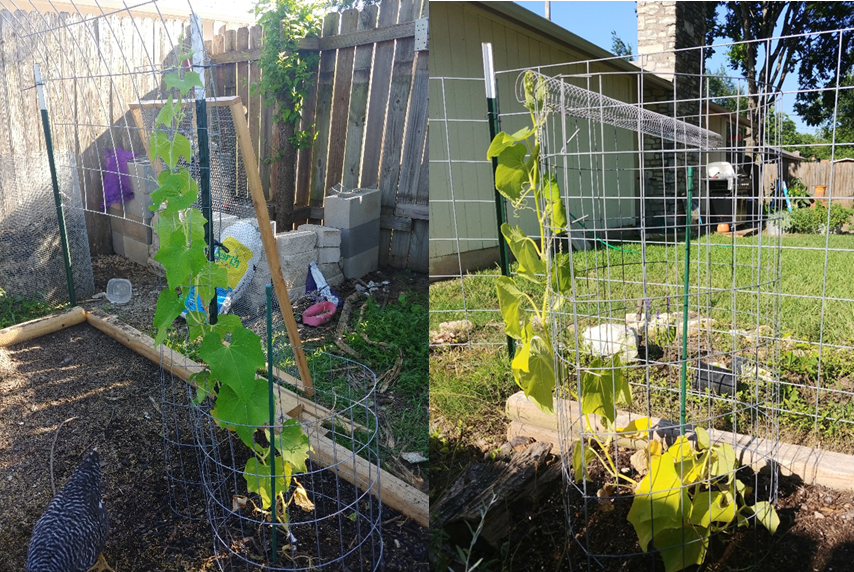
Image 16. Kevin de Santiago’s IT mirlitons in early June 2021.
Alan Raymond – Kingwood, TX
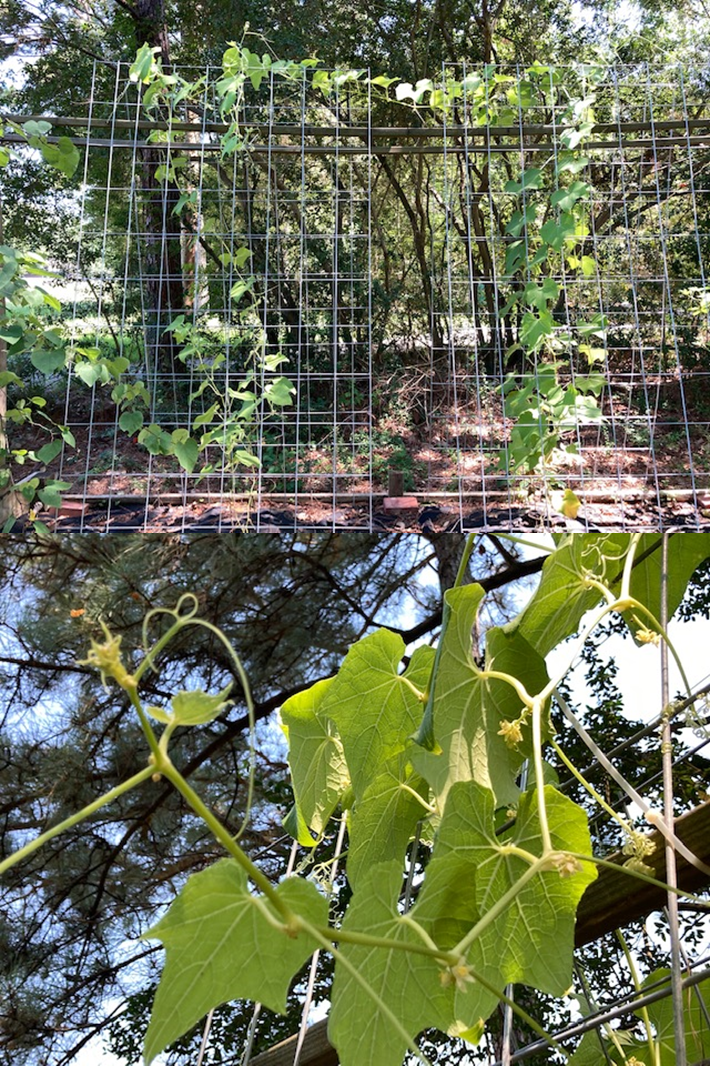
Image 17. Alan Raymon’s IT mirlitons in early June 2021.
I believe these are all of the photos I have from our growers. I imagine you are as impressed with their progress as I am. This is an amazing start for 2021 compared to where we were in June 2020! Kudos to all the growers and continued success as we head into the hotter part of the year as Paul has warned. Please be vigilant and don’t forget to use shade cloth as needed.
Tee Shirt Campaign:
We continue to have steady sales of our Ishreal Thibodeaux White Mirliton Preservation Project tee shirts. The purchase of these shirts helps us continue our efforts to preserve and promote the work of Mirliton.org. If you are interested in purchasing one, these shirts are available as a special offering for those wishing to donate $30 per shirt to Mirliton.org. We posted our first ad in late November and almost immediately sold out of many popular sizes. We saw similar trends for the second shipment and currently will receive our third shipment in late June and will have more available for the $30 donation (which includes postage and handling cost). To order your own, simply click here or send me an email at rpcajun2r@gmail.com.
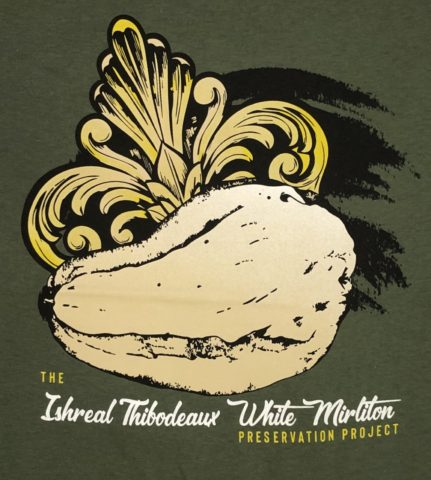
Image 18. The official project Tee Shirt.

Image 19. The official tee shirt of The Ishreal Thibodeaux White Mirliton Preservation Project.
Education and Inspiration Through Food:
In addition to the great information regarding the growing of mirliton, don’t forget we have a section completely devoted to recipes found below: International Mirliton/Chayote Recipes – Mirliton Dr. Hill has continued to add great recipes as he comes across them. Check it out and start planning your Fall mirliton menus now!
Thoughts so far for the 2021 Growing Season:
This second update of 2021 should clearly give the reader an idea that the program is doing quite well with our expanded group of growers. I am really impressed and inspired by what I am seeing. Barring any natural disasters or excessive heat issues this year, I can see 2021 definitely shaping up for the first bumper crop of Ishreal Thibodeaux White Mirliton in decades!
As a final note, if you wish to be considered in the third wave of growers in 2022 or interested in the project, please check out this link. Thank you all for the interest and support in 2020 and we wish you and your family and friends a safe, healthy, and wonderful spring growing season.
If you have any comments, questions, or suggestions, please send them to me David J. Hubbell at rpcajun2r@gmail.com. Thank you.
by David Hubbell | May 15, 2021 | Mirliton
Albert Smith, Sr. (1892-1963)
Most people have heard of a ship in a bottle or even a message in a bottle; but have you ever heard of a mirliton in a bottle? Well, if you were alive in New Orleans on December 5, 1939, you would have seen this incredible picture captured by the now defunct The New Orleans States newspaper.
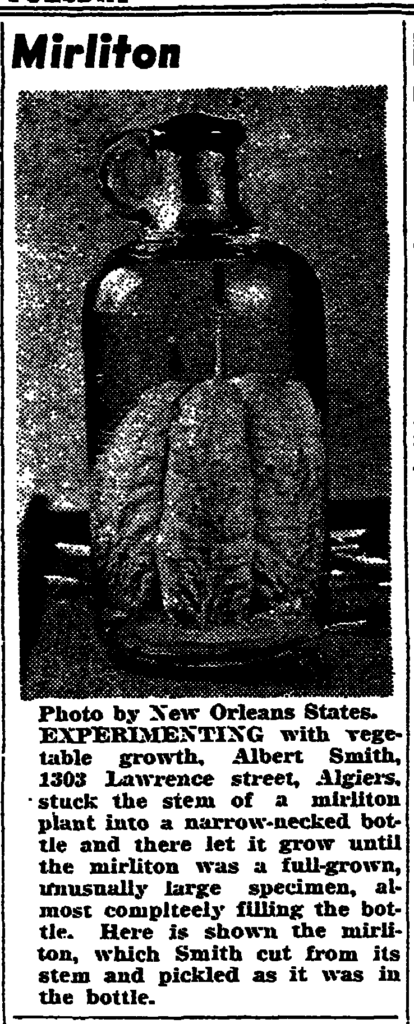
Image 1: The New Orleans States1 Article
When I first came across it in my studies, I was struck with curiosity by a number of things: what kind of mirliton variety was this, what size and kind of jug was it growing in, and most importantly: who was Albert Smith, Sr.?
What Kind of Mirliton?
This question is probably the hardest to answer. The reason being is that mirliton comes in so many sizes, shapes, and colors and until Dr. Lance Hill and Mirliton.org started giving them “names” it was probably described by just that – size, shape, and color. Some things we can glean from the photo is that there is a good chance that this variety was probably light green to white. The reason I conclude this is that by looking at other black and white photos in publications from the 1920s-30s we can see how the this compares to those that have been identified as white or light green. The other thing we can learn is that the paper describes this as an “unusually large specimen”. The 1923 publication, The Chayote: its Culture and Uses2, by L. G. Hoover notes the ideal size for commercial use and home production is between 8 and 16 ounces. This falls pretty much in line with what I am familiar with from my own growing experience and with the work of Mirliton.org. The dimensions for these larger mirlitons can easily have a “width” of 4 inches and “height” of 6 inches. The mirliton also seems to have 5 deep furrows and more of a “snub nosed” top. Of course, in this case, the “snub nosed” top could perhaps have been formed due to growing in the jug, especially if it was growing just inside the opening. Oh, while its probably my imagination I feel like I can see some spininess on its surface, but before I go on, let’s look at the jug.
What Kind of Jug?
Based of off typical mirliton dimensions, even the largest of mirlitons would be dwarfed by a one-gallon jug. Additionally, we can surmise that this jug is clear. Based on what I could find online for vintage glass jugs and advertisements in the New Orleans papers of the day, I am guessing this size was a half-gallon that could have been used for common products such as syrup, vinegar, or even port wine. In any case, it would be perfect for just such an experiment, but why do it in the first place?
Fruit and Vegetables Grown in Bottles
A quick scan on histories of growing fruit or vegetables in a bottle reveal that it has been a practice for some time. The February 1930 edition of the magazine Popular Science features a photo of a Capt. John A. Gilman of the US Army Quartermaster Corp in Washington DC holding a watermelon inside a bottle (Popular Science – Google Books)3 and explains how it was done. Further searching reveals that a popular clear fruit brandy, Eau de Vie, which translates as “water of life”, often contains a whole pear inside the small necked bottle (technically this is called Eau de Vie de Poire). How long the practice of the pear in the bottle has been done is hard to say, but newspapers in the New Orleans area in the late 1930s ran several advertisements for Eau de Vie and some current purveyors of this brandy claim the practice of growing the fruit in a bottle has been done for centuries.4 Therefore, the idea of fruit and vegetables grown in a bottle could have easily been a popular idea floating around New Orleans area gardeners in the 1930s, especially if you were an inquisitive individual such as Albert Smith, Sr.
Albert Smith, Sr.

Image 2: Albert Smith Sr. possibly in the 1920s
On July 9, 1892, Albert Smith, Sr. was born in Quitman, Brooks County, Georgia near the Georgia/Florida border (close to Tallahassee) to William and Julie Smith. He married Ira Moore Thompson on November 17, 1915 in Brooks County as well5. According to Albert’s WWI Draft Card filled out on June 5, 1917, he was listed as living a little bit north of Quitman in Morven, Georgia6. At that time, we learn that he was employed as a Saw Mill Laborer and had one child. He is described as being of medium height with a slender build, with brown eyes and black hair. From the 1920 Census, we learn that Albert was still living in Brook County, GA in late January 19207, but by the 1930 Census, he was living in Algiers, Louisiana8. We also learn from this that his oldest daughter, Rose, who was born on September 14, 1921 was born in Louisiana. Thus, we can surmise that sometime between 1920 to 1921, that Albert, Ira, and their two children had moved to Louisiana.
So, what would bring this man and his young family from Georgia to Louisiana? Census records indicate that both his parents and wife’s parents were from Georgia, thus he appeared to have no family in Louisiana. Records also indicate that Albert had a railroad pension from the Southern Pacific Railroad Co.9, but the Southern Pacific’s most eastern destination along the Gulf Coast was New Orleans. It should be noted, that the Southern Railroad did leave from New Orleans to cover parts of the South and East coasts and it appears one of the short lines off of the main, traveled through Thomasville and Valdosta Georgia with Quitman right in its path. Additionally, sawmills had their own industrial railroads connecting to the other lines. Upon further research, it appears that the South Georgia Railway was built through Morven and appears to have fed the line going through Quitman. Thus, with Albert’s work at the sawmill, it would have put him in direct contact with the railroad on a daily basis for a time and as such he probably had several contacts with news from various parts of the route. While this was possibly the case, by 1920, he and Ira were both listed as laborers on a farm in Briggs, which was also in Brooks County. The average daily rate for a male farm worker across the country in 1919 was around $3.03 or maybe $0.38/hr10. Brooks County’s main agricultural product had been to grow cotton. Income levels in Georgia during the time appear to be slightly below the national average, so there is a high probability that their daily income was lower than this. So, what news could draw him to Algiers? In a recent NOLA.com article, I learned that the Southern Pacific Co. had a “…22-block-long railyard complex in Algiers. The facility once employed 4,000 workers and built steam locomotives and other rail parts… When in operation, Southern Pacific locomotives and railcars were transported by a barge ferry from downtown New Orleans to Algiers, where they were reconnected before moving on to western states.“11 Further research shows that the railroad had come to Algiers in 1852 and that this factory was built in 1920. Additionally, the following ad appeared in the May 7, 1920 edition of the Times-Picayune.:

Image 3: Wanted Ad in 192012
Now, while this wasn’t the Algiers facility, it is interesting to note this hourly rate. There is a good chance that Albert could have easily seen the opportunity to possibly double his hourly wage and improve things for his family. Additionally, there was a recession from 1920-21, so there was probably even more incentive to move and look to improve one’s life. Regardless of what spurred the move, Albert appeared to have found a great opportunity with the Southern Pacific Co., which seemed to provide for him and his family through the rest of his working life and beyond.
Life in Algiers
Prior to moving to the Lawrence St. address listed in the caption, it looks Albert Smith and his young family were renting at 1723 Whitney Ave. in 1930. The best I can tell, they next moved to the Lawrence St. address, which they remained at until 1945-52. Image 4 shows what this location looks like in the present day.

Image 4: Location of Albert Smith’s Algiers residence13.
It should be noted that today there does not appear to be a 1303 Lawrence St., just 1301 and 1305. I am guessing it must have been renumbered at some point. It should also be noted that while Albert and his family lived here, the Greater New Orleans Bridge, known today as the Crescent City Connection, would not have been looming large behind them as it currently does, since it wasn’t built until 1958. Perhaps its impending construction is part of what led them to move one last time. Following these dates Albert and family moved to 1875 Whitney Ave. I am not sure where 1723 or 1875 Whitney were based off of the available information online. They either renumbered those properties as well or renamed that section of the road as L. B. Landry. It should also be noted that by then, Albert and Ira had a large family of twelve children; 7 daughters and 5 sons.
I was fortunate enough to correspond with one of Albert’s granddaughter, Monique Miles Logan, who through the help of her cousins queried two of Albert and Ira’s remaining daughters about his mirliton growing. The daughters remember that “…he always pickled them. He had a plentiful garden w/ okra, greens, mirlitons, tomatoes.” And that “ … (the) garden was like the Farmers Market because he shared with neighborhood.” Albert surely must have been a great gardener to be able to supply enough vegetables for his large family and the neighborhood.
As a quick aside on pickling mirliton, most recipes I have seen call for peeling, seeding and cutting the mirliton into strips. Albert’s method of pickling the whole mirliton seems very unique to me. Two of the pickled mirliton recipes I found from 1935 called for immersing the mirliton in a hot vinegar, salt, pepper (cayenne or green or Tabasco), and some pickling spices. These would be stoppered then allowed to “ripen” for 10 days indoors in a cool location. It would be interesting to try to replicate Albert’s experiment to see how one could possibly retrieve the mirliton to eat.
Sadly, on Tuesday, March 5, 196314, at the age of 70, Albert Smith Sr. passed away. His wife Ira had preceded him in death on Thursday, January 19, 196115. At the time of his passing, Albert left behind 12 children, 24 grandchildren, and 2 great grandchildren. He and Ira were buried at the Christian Social Cemetery in Gretna, Louisiana.

Image 5: Albert and Ira’s Grave Stone16
Closing Thoughts
As I got into researching Albert Smith, Sr., I felt a connection to him in the sense that he had some similar attributes to that of my late Grandfather, Lucien Robert. Both had 12 children, over 23 grandchildren, grew up in rural communities and settled in the “suburbs” of New Orleans, and had huge gardens that grew a variety of vegetables in their backyard, although in my Grandfather’s case he didn’t grow mirliton. I certainly would have loved to see the abundance that was generated from his gardens and learn from his years of mirliton growing experience, not to mention his creativity and ingenuity in getting a mirliton to grow inside a glass jug. So, can we ever figure out what variety of mirliton Albert grew? Sadly, probably not. Without a better picture or written description, it would all be just speculation and as all too many families living in the New Orleans area know, many of the Smith’s family photographs, records, and keepsakes were destroyed by the floodwaters of Katrina. Despite that I am thankful to those who preserved the old newspapers and also the fact that someone in 1939 decided to print the photo. For without them, I would never have known of or gotten to “meet” one of Louisiana Mirliton Pioneers, Albert Smith, Sr.
Special Thanks
To Monique Miles Logan, her Aunts, Cousins, and all of the Smith family for allowing me to share the story of their Father and Grandfather. Thank you also to Albert Smith, Sr. for the inspiration!
Sources:
- “Mirliton,” New Orleans States (New Orleans, LA) 5 December 1939, page 5, GenealogyBank
- L. G. Hoover, The Chayote: Its Culture and Uses, Circular 286, United States Department of Agriculture (Washington, D.C., September 28, 1923), https://archive.org/details/chayoteitscultur286hoov/page/n1
- Popular Science, Feb 1930, pg. 60, Vol. 116, No. 2.
- Poire Williams – Gastro Obscura (atlasobscura.com)
- Ancestry.com. Georgia, U.S., Marriage Records From Select Counties, 1828-1978 [database on-line]. Provo, UT, USA: Ancestry.com Operations, Inc., 2013. Original data: County Marriage Records, 1828–1978. The Georgia Archives, Morrow, Georgia.
- Ancestry.com. U.S., World War I Draft Registration Cards, 1917-1918 [database on-line]. Provo, UT, USA: Ancestry.com Operations Inc, 2005.
- 1920; Census Place: Briggs, Brooks, Georgia; Roll: T625_237; Page: 2A; Enumeration District: 47
- 1930; Census Place: New Orleans, Orleans Parish, Louisiana; Page: 6A; Enumeration District: 0256; FHL microfilm: 2340547
- United States. Bureau of Labor Statistics. (1939). Monthly labor review. Washington: G.P.O.
- The National Archives at Atlanta; Morrow, Georgia; Records of the Railroad Retirement Board, 1934 – 1987; Record Group Number: 184.
- “Algiers Point’s empty tract could be developed if contaminated soil is removed”, NOLA.COM, (New Orleans) by Mark Schleifstein, May 6, 2020.
- Times-Picayune (New Orleans, LA) 7 May 1920, page 18, GenealogyBank
- Google. (n.d.). [Google Maps directions for driving from 1303 Lawrence St, Algiers, Louisiana]. Retrieved May 13, 2021, from https://www.google.com/maps/place/1303+Lawrence+St,+New+Orleans,+LA+70114/@29.9391452,-90.0433388,3a,75y,199.8h,84.53t/data=!3m6!1e1!3m4!1sVCCZOql-vh2UJaxdtwiBew!2e0!7i16384!8i8192!4m5!3m4!1s0x8620a651e0e21fdb:0xaa415c29ebd08d64!8m2!3d29.9388922!4d-90.0433527
- Times-Picayune (New Orleans, LA) 8 March 1963, page 2 GenealogyBank
- Times-Picayune (New Orleans, LA) 22 January 1961, page 10 GenealogyBank
- https://www.findagrave.com/memorial/157156887/albert-smith

by David Hubbell | Mar 27, 2021 | Mirliton
By David J. Hubbell
Background:
On June 20th, 2020, Mirliton.org announced the we were kicking off the Ishreal Thibodeaux White Mirliton Preservation Project in an attempt to bring back, from the brink of extinction, this rare ivory white variety of the mirliton grown and cared for over four decades by Opelousas, Louisiana’s Ishreal Thibodeaux. If you haven’t already check out the last Update on the Ishreal Thibodeaux White Mirliton Preservation Project – please do so here: Update on the Ishreal Thibodeaux White Mirliton Preservation Project – November/December 2020 – Mirliton. It links back to the other updates which contain an in depth look at all of our growers and efforts from the start of the project.
Welcome New Growers:
I am happy to announce our second group of new growers for the Ishreal Thibodeaux White Mirliton Preservation Project. This year we are expanding into Texas and Illinois. Please welcome our growers –Beverley Thomas of Fort Worth, TX, Alan Raymond of Kingwood, TX, Kevin De Santiago of Round Rock, Texas, Salina Wunderle of Chicago, Illinois, David Duvic of southern West Feliciana Parish, Christopher Brooks of Opelousas, Laken Thomas of Lake Charles, and Wade Guidry – south Louisiana. We look forward to their updates and to their helping us expand our restoration and production so we may further our preservation efforts as well as have more seed mirliton to be available to future growers.
Reports from the Field:
As you can imagine most of the growing progress has come to a standstill during the winter months. Many of the growers are still assessing the ravages of winter on their plants and we hope to know more in our next update. The busiest folks in our group with regard to the project were probably Paul D’Anna and Chef John Folse in their efforts to overwinter and make available the plants for our next group of growers in addition to protecting their own vines. Check out how Chef John and Brian Ainsworth prepare the potted plants for shipping to our new growers in the link below:

Image 1. Chef John and Brian packing up some white mirliton plants for shipping. Click on image or this link for the associated video: Ishreal Thibodaux White Mirliton Shipping – YouTube.
We also had some brisk holiday sales of our Ishreal Thibodeaux White Mirliton Preservation Project tee shirts. The purchase of these shirts helps us continue our efforts to preserve and promote the work of Mirliton.org. If you are interested in purchasing one, these shirts are available as a special offering for those wishing to donate $30 per shirt to Mirliton.org. We posted our first ad in late November and almost immediately sold out of many popular sizes. The good news is that we received a second shipment in December and have more available for the $30 donation (which includes postage and handling cost). To order your own, simply click here or send me an email at rpcajun2r@gmail.com.

Image 2. The official project Tee Shirt.

Image 3. The official tee shirt of The Ishreal Thibodeaux White Mirliton Preservation Project.
Education and Inspiration Through Food:
In addition to the great documentation on the shipping process at White Oak Estate and Gardens, Chef John Folse provides us a little further inspiration with the following recipe for a Mirliton Bisque. Check this out and please “Like” and “Subscribe” to Chef’s new YouTube page.

Image 4. Chef John Folse’s Mirliton Bisque.
I decided to get into the cooking act too with a recipe from the late great New Orleans Chef Austin Leslie. He and Chef Folse were good friends and this is a unique recipe worth trying. It is Chef Leslie’s Mirliton Gumbo.

Image 5. Chef Austin Leslie Mirliton Gumbo prepared by David Hubbell.
Thoughts for the 2021 Growing Season:
This first update of 2021 hopefully will inspire everyone with our efforts to continue to preserve this rare Louisiana heirloom. Thanks to the growing and distribution efforts of Paul D’Anna as well as Chef John Folse, Brian Ainsworth, and Ryan Diez at White Oak Estates and Gardens we should have close to 40 viable vines producing Ishreal Thibodeaux White Mirlitons throughout 7 states in the coming growing season. If we have similar success to last year, we should be able to provide these white mirliton to a larger third group of growers in 2022. I am also hoping that each of the growers are able to continue their own propagation of vines on their properties and that they will become distribution centers/hubs for those wanting to acquire and grow these in their communities. I once again reflect upon how a simple text from Chef Folse from a year ago asking for help locating more Ishreal Thibodeaux white mirliton vines has grown into a movement to not only preserved that single vine, but to save and propagate a special variety for others to experience. Thanks to the guidance of Dr. Lance Hill and the efforts of the first group of growers. Again, it is scary to think that the fate of the Ishreal Thibodeaux White Mirliton vine could have easily become another causality of 2020, but thanks to the unselfish efforts, dedication, and desires of our first team of growers we are happy to report that we feel we have a great foundation to build upon in 2021. If our future efforts can have similar success, then by next year at this time we will be poised to have hundreds of Ishreal Thibodeaux White Mirliton vines plus a network of growers going into 2022 and should have successfully restored if not exceed the number of vines growing in the United States to probably record numbers.
As a final note, if you wish to be considered in the third wave of growers in 2022 or interested in the project, please check out this link. Thank you all for the interest and support in 2020 and we wish you and your family and friends a safe, healthy, and wonderful spring growing season.
If you have any comments, questions, or suggestions, please send them to me David J. Hubbell at rpcajun2r@gmail.com. Thank you.
by Lance Hill | Jan 8, 2021 | Mirliton

Chrissy and Ryan Rockefeller
Rockefeller Heirloom Mirliton Donated to Mirliton.Org
By Lance Hill
I am delighted to announce that Ryan and Chrissy Rockefeller of St. Rose, Louisiana have donated several sprouts to Mirliton.Org to propagate. This is a previously unseen dark green and slightly spiny variety.

Image 1. Rockefeller Heirloom Mirliton.
Chrissy Missios Rockefeller has been regularly posting about their mirliton vine on the Louisiana Edible Gardeners Facebook group. We were intrigued that it produced some dark green and spiny mirlitons. Similar varieties exist throughout the word, but Louisiana growers have favored pale green and smooth varieties. Somehow this variety survived. Mirliton.Org plans to carefully cultivate this variety to preserve and repopulate it. We have, as is our practice, named the variety after the family that had owned and preserved it for years.

Image 2. Rockefeller Heirloom Mirliton Vine growing in St. Rose.
People often ask us if different varietal colors and characteristics indicate differences in flavor. Imported mirlitons (chayote) have been selected for uniform color, size, and smoothness, all at the expense of flavor. We know that there are differences in flavor in Louisiana-grown heirlooms and plan to flavor- test the Rockefeller variety.

Image 3. Rockefeller Heirloom Mirliton sprouts.
If you are interested in growing the variety to provide it to aspiring growers, and if you have adequate trellis space and frost protection in place, please email me at lance@mirlton.org for an application.
Special thanks to Paul D’Anna for his help in securing this donation.
by David Hubbell | Jan 8, 2021 | Mirliton
Update on the Ishreal Thibodeaux White Mirliton Preservation Project – November/December 2020
By David J. Hubbell
Background:
On June 20th, 2020, Mirliton.org announced the we were kicking off The Ishreal Thibodeaux White Mirliton Preservation Project in an attempt to bring back, from the brink of extinction, this rare ivory white variety of the mirliton grown and cared for over four decades by Opelousas, Louisiana’s Ishreal Thibodeaux. If you haven’t already checked out the Update on the Ishreal Thibodeaux White Mirliton Preservation Project – July 2020 , August/September 2020, or October 2020 please do so by clicking on the respective links. They contain an in depth look at all of our growers and efforts from the start of the project.
Reports from the Field:
The month of November was one of peak production for the Ishreal Thibodeaux Mirliton growers in Louisiana, followed by a winding down and getting ready for the 2021 growing season. While some of the growers in Baton Rouge and further north would start to encounter frosty conditions in December, there had still been plenty of time for at least two great crops from Chef John Folse and an unofficial grower in Folsom, Louisiana. Both produced 80-90+ Ishreal Thibodeaux’s each, many going toward our next round of spring growers.
Chef John reported back in November, “Our mirliton vine is still healthy and prolific in Baton Rouge here in late November. We still see numerous small mirlitons and many flowers producing numerous small vegetables. It really has been a banner year in our efforts to preserve this rare and special Ishreal Thibodaux variety.”

Image 1. First group of mirlitons picked by Chef John Folse at White Oak Estate and Gardens.

Image 2. Some additional yields picked at White Oak Estate and Gardens in Baton Rouge.

Image 3. The largest Israel Thibodaux Mirliton picked this year from Chef John Folse’s Trellis in Baton Rouge. 1 pound 14.5 ounces!
As the readers will observe, White Oak Estates and Gardens in Baton Rouge has quickly become the center of Ishreal Thibodeaux White Mirliton production in the United States. We appreciate all of Chef John’s efforts in documenting his yields as well as his techniques. As you will see here, on November 30th, Chef, his gardener Brian Ainsworth, and staff took great care to prepare the mirliton vines against the impending freezing conditions on that date.

Image 4. Large Ishreal Thibodeaux vine at White Oak Estate totally covered in anticipation of 30 oF.

Image 5. Four Ishreal Thibodaux Mirliton beds covered from frost at White Oak.
White Oak is also preparing for the future with there overwintering of over 35 pots of the Ishreal Thibodeaux Mirlitons shown below. Chef John notes: “… Brian and I are getting 20 three-gallon pots ready with proper soil to plant the mirliton as they show vine potential. “Later in December he reported the following projection – “35 potted by next week all doing well and vine protected in the covered vine house with heaters.”

Image 6. First round of Ishreal Thibodaux White Mirlitons potted for overwintering.

Image 7. Sprouted Ishreal Thibodaux White Mirlitons potted for overwintering.
Just as we reported in the last update that our Carolina growers, Chris Smith and Keith Mearns, are having success with propagating cuttings, gardener Brian Ainsworth and his wife have found success in rooting Ishreal Thibodaux White Mirliton in the White Oak Estate greenhouse from cuttings.

Image 8. Mrs. Ainsworth displays a successfully rooted mirlitons vine from a cutting.
If you’d like to see more about the Ishreal Thibodeaux White Mirliton Preservation operation at White Oak Estate and Gardens in Baton Rouge, please click the photo below and check out Chef John Folse’s video included below:

Image 9. Virtual Visit to White Oak Estates and Gardens
In addition to our official growers, our Metairie grower Paul d’Anna reports one of his contacts whom he gave an Ishreal Thibodeaux vine to in the spring produced 92 mirliton this year. Paul shared with me the that the vine didn’t really take off until September. Up to that point it was about 18” long. He said that neither he nor the grower did anything special. They just watched for potential issues due to squash vine bore and protected it from the evening sun especially in July and August. They also have guarded against anthracnose by removing the bottom 4 feet of leaves once the vine has really started to take off. Paul also said that the gentleman in Folsom cut his vine back due to the freezing weather in December. Mirliton.org acquired a good number of these to be able to supply growers to the second wave for 2021.
The last, but not least, of our official Louisiana growers, James Cobb shared this great picture of his vine and reported “These 2 of mine will be used to get new vines growing, hoping to make way more next season.”

Image 10. James Cobb’s two beautiful Ishreal Thibodeaux White Mirlitons.
We are really looking forward to James’ success in 2021.
As we have previously mentioned Carolina growers had some good success with their attempts at cuttings are basically in the overwintering stage to get an earlier start in 2021.
Finally, the Ishreal Thibodeaux Mirliton in Mobile is doing well despite the late start. It is slowly growing and we will try to avoid cutting it back and simply take measures to protect it so it will have a great head start in the spring.

Image 11. David Hubbell’s mirliton slowly adjusting to being transplanted in Mobile.
Tee Shirts:
In the last update, I alluded briefly to the new The Ishreal Thibodeaux White Mirliton Preservation Project tee shirts, but failed to share more information about them. At the beginning of the project, Dr. Lance Hill had a great idea to create a shirt for our initial growers commemorating their participation in the project. Working with a local Louisiana artist, the following design was created and several shirts were printed. It was then decided that we would make these shirts available as a special offering for those wishing to donate $30 per shirt to Mirliton.org. We posted our first ad in late November and almost immediately sold out of many popular sizes. The good news is that we received a second shipment and have more available for the $30 donation (which includes postage and handling cost). To order you own, simply click here or send me an email at rpcajun2r@gmail.com.

Image 12. The official tee shirt of The Ishreal Thibodeaux White Mirliton Preservation Project.

Image 13. The official tee shirt of The Ishreal Thibodeaux White Mirliton Preservation Project.
Education and Inspiration Through Food:
In addition to the great documentation on the growing process at White Oak Estate and Gardens, Chef John Folse provides us a little further inspiration with the following recipe for a Mirliton Pie. Check this out and please “Like” and “Subscribe” to Chef’s new YouTube page.

Image 14. Chef John Folse’s Mirliton Pie.
I was also invited to do a follow up call with local Mobile gardening radio show about the efforts so far. Mobile’s horticulturist, Bill Finch, is a great supporter of the traditional Gulf Coast vegetables and is very interested in mirliton. I am including the link to the show for those interested. The discussion on the Ishreal Thibodeaux’s starts around 18 minutes in: Plain Gardening with Bill Finch Hour 2 12-13-20 – FM Talk 1065
Thoughts for the 2020 Growing Season:
This fourth update hopefully showcased what I consider to be a successful end to our efforts in 2020. As I write this on the last day of the year and look back on all the negative things that have impacted the world and even my personal life, I have to think that by far the formation and initial successes of this project and the efforts of the growers has been for me the brightest spot in my year. What started as a simple text from Chef Folse in March asking for help locating more Ishreal Thibodeaux white mirliton vines has grown into a movement to not only preserved that single vine, but to save and propagate a special variety for others to experience. Thanks to the guidance of Dr. Lance Hill and the efforts of these growers we now have roughly 14 new vines plus over 100 potted plants for the second wave of growers for 2021. The fate of the Ishreal Thibodeaux White Mirliton vine could have easily become another causality of 2020, but thanks to the unselfish efforts, dedication, and desires of our first team of growers we are happy to report that we feel we have a great foundation to build upon in 2021. If our future efforts can have similar success, then by next year at this time we will be poised to have hundreds of Ishreal Thibodeaux White Mirliton vines plus a network of growers going into 2022 and should have successfully restored if not exceed the number of vines growing in the United States to probably record numbers.
As a final note, I have gone through my list of growers for the second wave and will finalize their commitments for 2021. If you are interested, please check out this link. Thank you all for the interest and support in 2020 and we wish you and your family and friends a safe, healthy, and wonderful New Year.
If you have any comments, questions, or suggestions, please send them to me David J. Hubbell at rpcajun2r@gmail.com. Thank you.
by Lance Hill | Nov 24, 2020 | Mirliton
Old Family Tradition of Mirliton Growing Flourishes in St. John Parish
By Renee Lapeyrolerie and Dr. Lance Hill
First, a little genealogy. In the 1970s, Joseph “Junior” Remondet started his first mirliton (chayote) vine in Reserve, St. John the Baptist Parish in Louisiana. Remondet’s uncle had handed down the old family variety that they had for generations. Junior shared it with his bother-in-law and next-door neighbor, Earl Perque, who bequeathed it to his son Paul Perque It’s a bit like the begats in the bible, but Louisiana mirliton growers believe in preserving family traditions.

Figure 1 Remondet-Perque Heirloom Mirliton
Mirlitons are in the Remondet-Perque family’s genes. The family has grown them for generations. Junior Remondet is a big, garrulous man with a thick Louisiana French accent. His uncle told him to plant two mirliton seeds in keeping with an old myth that you need a male and female plant; but it was good advice since it doubled his chances of success. The family heirloom mirliton is now primarily in the care of Paul Perque. The trellis 15′ X 10’ and is made of fence posts and covered on top with livestock panels (4”x4” mesh) and receives full sun.

Figure 2 Joseph ‘Junior’ Remondet, Paul Perque, and Ryan Remondet.

Figure 3 Paul Perque with his current vine, has yielded over 300 mirliton at publishing.
Paul Perque’s late mother, Sylvia, took careful notes of the harvest in the back of her address book. Her records include years of family and friends who would call and request mirliton for purchase by the dozen to make stuffed mirlitons. Miss Sylvia was a great cook, known for making pastries for the local church and school.

Figure 4 Sylvia Audiffred Perque’s family notebook of 2013 Mirliton Harvest.
Ryan fondly remembers helping his father tend to the mirliton trellis, running new wires across the top. Ryan is in the grocery produce business and recounts when a colleague from the West Coast visited him and was mystified by the enormous quantity of chayote coming into Louisiana since there were few of the Latino and Asian populations that valued the squash. Ryan told him the history of home growing mirlitons in Louisiana. For the coup de grace, he had his mother prepare his colleague some of the traditional shrimp-stuffed mirlitons.
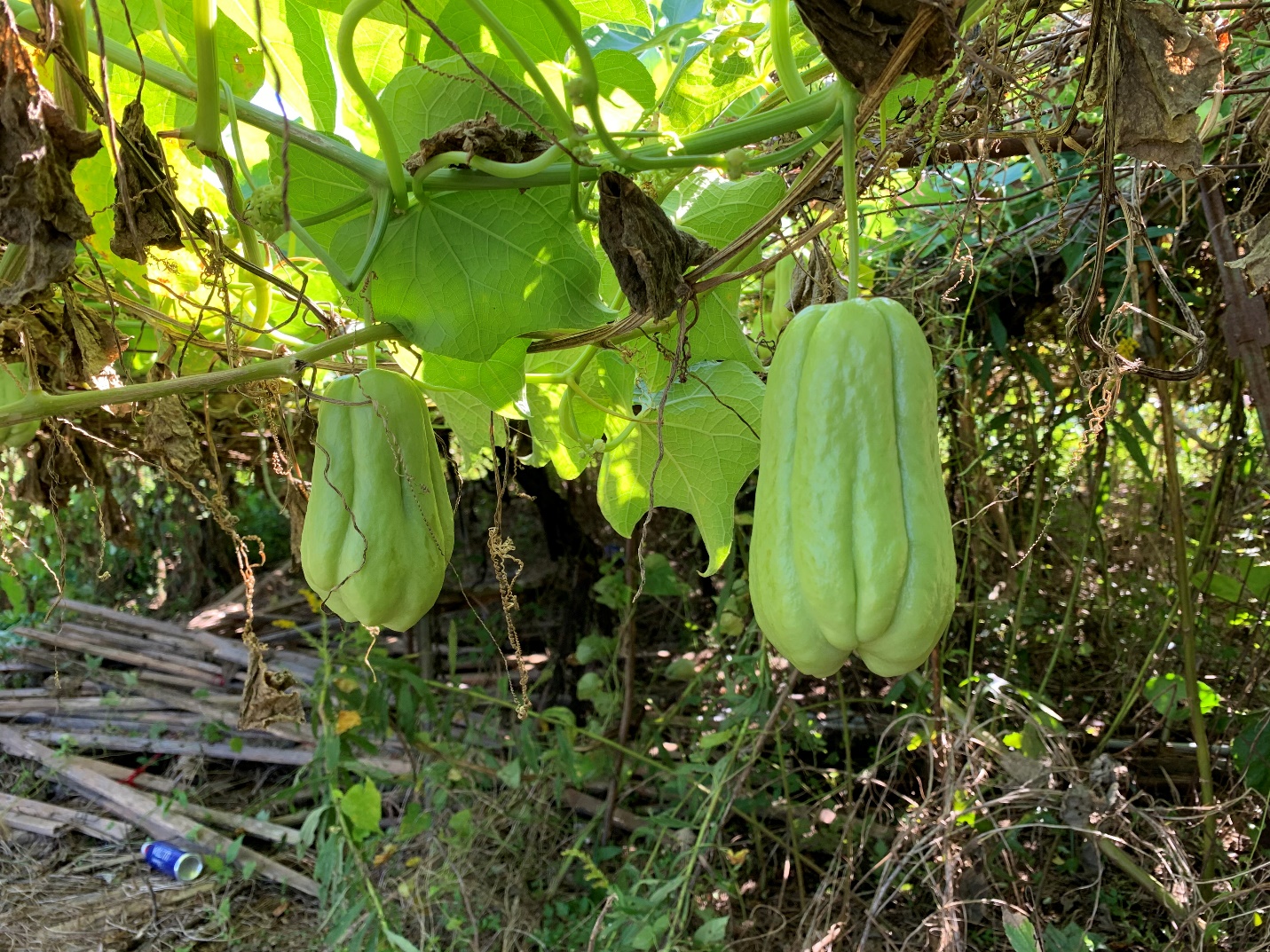
Figure 5
The vine is located at the end of the family lane and adjacent to a large drainage ditch alongside the Canadian North Railroad. Junior’s uncle had suggested that he plant near a water source such as this, and Paul credits the vine’s success to this location.
The vine has a traditional Louisiana overhead trellis (arbor) and access to an adjacent tree that it likes to climb. In 2019, an early frost—the first in over a century—killed the top of the vine but it recovered and regrew in the spring of 2020.
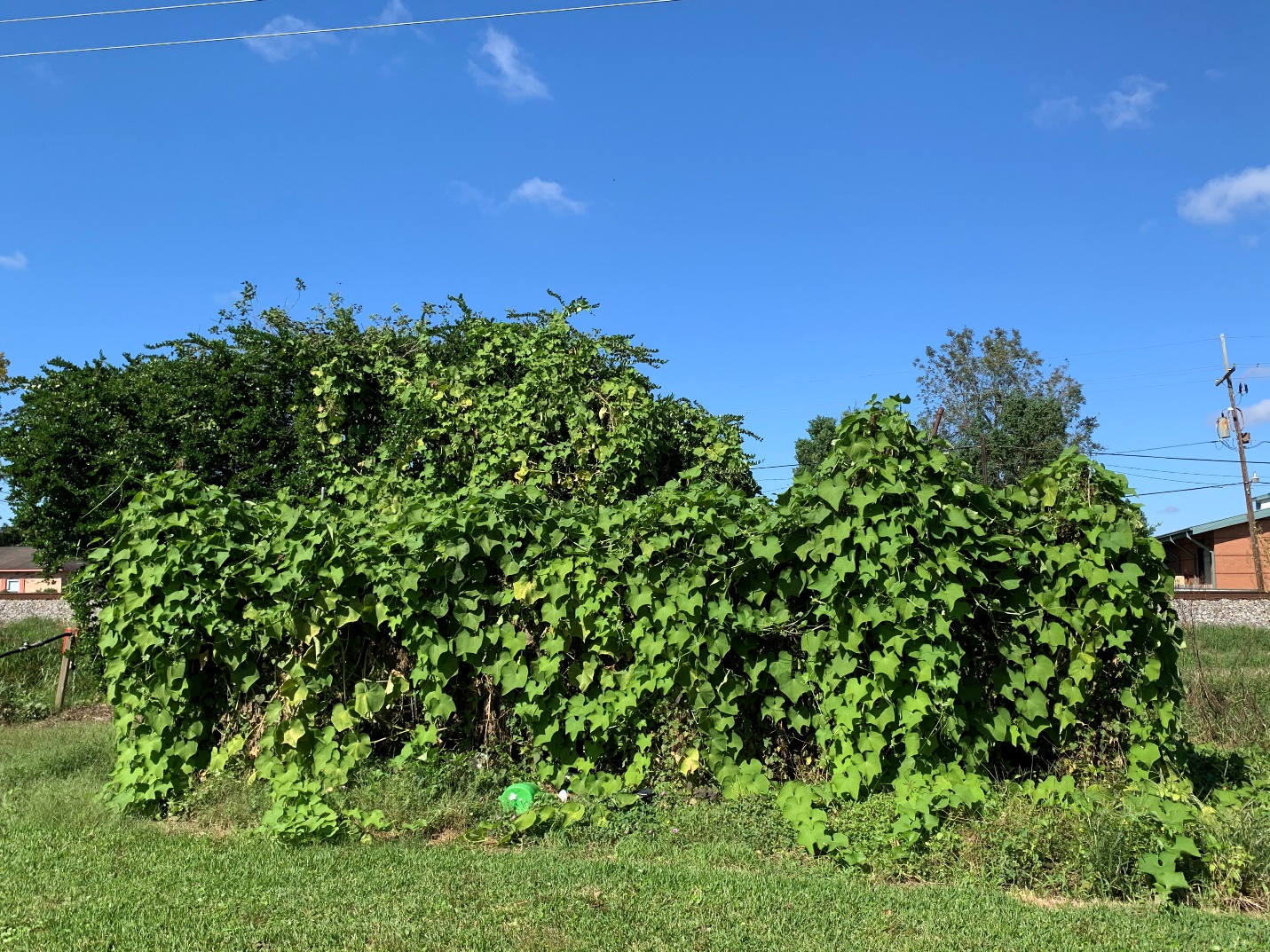
Figure 6 Full Vine.

Figure 7 Earl Perque with his mirliton vine in background.























































Recent Comments